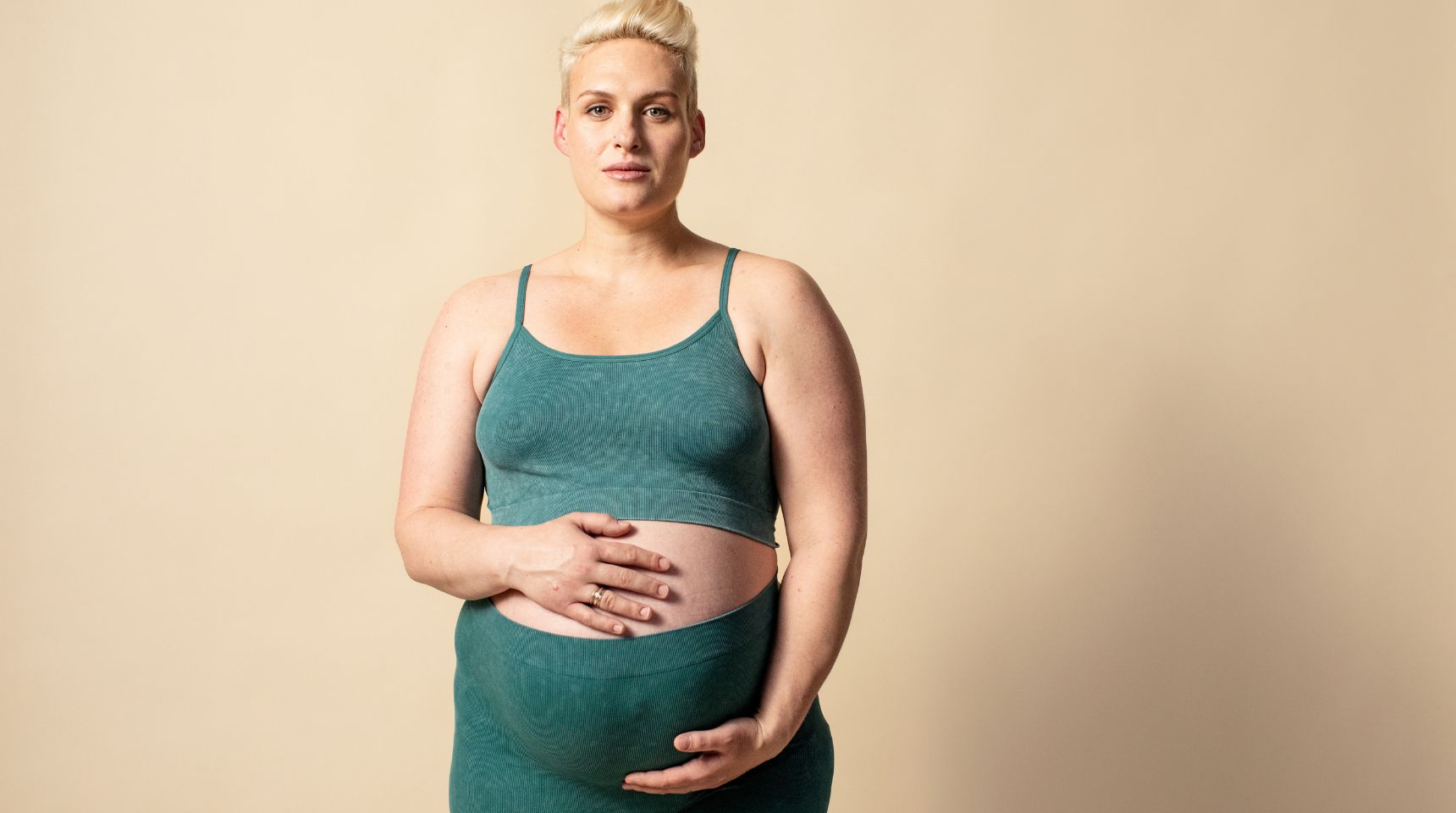Breastmilk is a perfect food, but there are many other reasons – for baby and mom – to breastfeed. Here are some great reasons to breastfeed your baby.
It’s an accepted fact that breastmilk is best for babies, offering health benefits for mom and baby that cannot be replicated synthetically. But we understand that what’s best isn’t always what’s easiest, so we’re here to keep you motivated.
What's in it for baby?
Breastmilk is a “perfect food.” It’s easy to digest, and because it is made of live cells, your baby’s body can easily absorb it. Breastmilk provides just the right proportion of essential nutrients, vitamins, proteins, fats and antibodies to help your baby’s body and brain develop.
What’s amazing is that it also can adapt its composition to meet your baby’s needs as they get older or become sick. Breastfed babies have a greater sense of taste and smell because breastmilk changes flavor based on the mother's diet. Just as importantly, your baby thrives emotionally because skin-to-skin contact with mom creates a strong bond and sense of security.
Being the perfect food, breastfed babies get a wealth of medical benefits. A preeminent baby authority, the American Academy of Pediatrics (AAP), states: "Breastfeeding ensures the best possible health and best developmental and psychosocial outcomes for the infant." Here’s why.
Breastfed babies…
- Get sick less and have a lower risk of allergies1
- May have a lower risk of obesity and Types 1 and 2 diabetes as they grow older. 2
- Have a lower incidence of SIDS (Sudden Infant Death Syndrome)3
- Have a reduced risk for ear infections (otitis media) and gastroenteritis4
- Are on a path to optimal brain development5
- Get substances that help strengthen and develop their immature immune system in a way no other substance can;6
- Respond better to immunizations against Polio, Tetanus, Diphtheria, and Haemophilus influenza (bacterium that can cause a severe infection);7
- Get substances that contribute to optimal oral development and decreases the risk of tooth decay;8
- Are protected against respiratory infections including those caused by rotaviruses. Babies are less likely to be hospitalized with pneumonia or bronchiolitis, and have a decreased risk of lower respiratory tract infections.9
- Have been associated with a slightly enhanced performance on cognitive development tests;10 and
- May have a reduced risk of obesity11
What's in it for mom?
Let’s not overlook the other critical part of the breastfeeding equation – mom! There are significant medical, emotional and financial reasons to breastfeed for moms, too..
Breastfeeding…
- Decreases breast cancer risk and may decrease the risk of ovarian and uterine cancer;12
- Reduces the risk of developing Type 2 diabetes;13
- Mothers show less postpartum depression. Breastfeeding triggers the release of oxytocin (the "love hormone") and prolactin, substances that help with relaxation and reduce stress;14
- Burns extra calories, making it easier to lose weight after pregnancy;15
- Helps your uterus return to its normal size and lessens bleeding you may experience after delivery;16
- Saves valuable time! No need to purchase, measure or mix formula, and no bottles to warm in the middle of the night. Breastmilk is always perfectly mixed and the right temperature. Plus, you never forget to bring it with you!
- Is free - at least the milk! Even if you are pumping, a good pump and accessories are far less expensive than formula. The average non-nursing mom spends over $3,000 a year on formula, while a good breast pump costs under $200; and
- Is environmentally friendly, producing no waste, packaging or pollution.
Footnotes:
1(Gartner LM, Morton J, Lawrence RA, et al. Breastfeeding and the Use of Human Milk. Pediatrics 2005;115(2):496-506)
2(Gillman MW, Rifas-Shiman SL, Camargo CA, Jr., et al. Risk of overweight among adolescents who were breastfed as infants. JAMA. 2001;285(19):2461-7)(Gerstein HC. Cow’s milk exposure and type 1 diabetes mellitus. A critical overview of the clinical literature. Diabetes Care. 1994;17:13-19. Kostraba JN, Cruickshanks KJ, Lawler-Heavner J, et al. Early exposure to cow's milk and solid foods in infancy, genetic disposition, and the risk of IDDM. Diabetes. 1993;42:288-295.)
3(Gartner LM, Morton J, Lawrence RA, et al. Breastfeeding and the Use of Human Milk. Pediatrics 2005;115(2):496-506)
4(Scariati PD, Grummer-Strawn LM, Fein SB. A longtitudinal analysis of infant morbidity and the extent of breastfeeding in the United States. Pediatrics. 1997;99(6):E5.)
5(Jensen RG. Lipids in Human Milk. Lipids. 1999;34(12):1243-1271)
6(Goldman AS. The immune system of human milk: antimicrobial, anti-inflammatory and immunomodulating properties. Pediatr Infect Dis J 1993;12(8):664-672)
7(Han-Zoric, M., "Antibody responses to parenteral and oral vaccines are impaired by conventional and low protein formulas as compared to breastfeeding." Acta Paediatr Scand 1990; 79:1137-42)
8(Aaltonen AS and Tenovuo J. Association between mother-infant salivary contacts and caries resistance in children: a cohort study. Ped Dentistry 1994; 16(2):110-16. Labbok, M.H. "Does Breastfeeding Protect against Malocclusion? An Analysis of the 1981 Child Health Supplement to the National Health Interview Survey" American Journal of Preventive Medicine, 1987 )
9(Oddy, WH et al "Breast feeding and respiratory morbidity in infancy: a birth cohort study" Archives of Disease in Childhood 2003;88:224-228. Galton Bachrach et al (2003) Breastfeeding and the Risk of Hospitalization for Respiratory Disease in Infancy" Arch Pediatr Adolesc Med 157:237-243)
10(Lucas A, Morley R, Cole TJ. Randomised trial of early diet in preterm babies and later intelligence quotient. BMJ. 1998;317:1481-1487. Horwood LJ, Darlow BA, Mogridge N. Breast milk feeding and cognitive ability at 7-8 years. Arch Dis Child Fetal Neonatal Ed. 2001; 84:F23-F27. Horwood LJ, Fergusson DM. Breastfeeding and later cognitive and academic outcomes. Pediatrics. 1998;101(1).
11(Uvnas-Moberg, Eriksson: "Breastfeeding: physiological, endocrine and behavioral adaptations caused by oxytocin and local neurogenic activity in the nipple and mammary gland." Acta Paediatrica, 1996 May, 85(5):525-30)
12(Newcomb PA, Storer BE, Longnecker MP, et al. Lactation and a reduced risk of premenopausal breast cancer. N Engl J Med. 1994;330:81-87. Jernstorm, H et al "Breast-feeding and the risk of breast cancer in BRCA1 and BRCA2 mutation carriers." J Natl Cancer Inst. 2004;96:1094-1098)(Rosenblatt KA, Thomas DB. Lactation and the risk of epithelial ovarian cancer. WHO Collaborative Study of Neoplasia and Steroid contraceptives. In J Epidemiol. 1993;22:192-197)
13(Stuebe AM, MD; Rich-Edwards J, Willett W, Manson J, Michels K. Duration of Lactation and Incidence of Type 2 Diabetes. JAMA. 2005;294:2601-2610)
14(Mezzacappa ES. Breastfeeding and maternal stress response and health (Review). Nutr Rev. 2004 Jul;62(7 Pt 1):261-8)
15(Dewey KG, Heinig MJ, Nommsen LA. Maternal weight-loss patterns during prolonged lactation. Am J Clin Nutr. 1993;58:162-166)
16 (Chua S, Arukumaran S, Lim I, Selamat N, Ratnam SS. Influence of breastfeeding and nipple stimulation on uterine activity. Br J Obstet Gynaecol. 1994;101:804-805)









